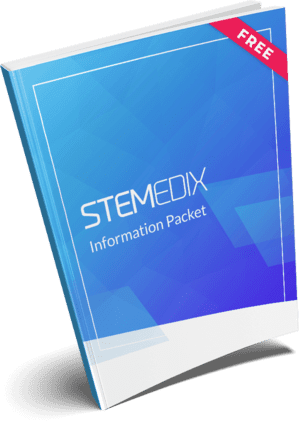Chronic low back pain is a widespread issue, affecting over 600 million people globally. It is a leading cause of disability, with significant social and economic consequences. In the United States alone, nearly 27 million adults experience back problems, with approximately 19 million seeking treatment. Discogenic lower back pain, which originates from the intervertebral discs, is the most common cause of this condition, accounting for about 39% of cases. Current treatment methods include conservative approaches, surgical procedures, and minimally invasive interventional techniques.
In this study, Navani et al. aimed to compare the safety and effectiveness of PRP and BMC injections for treating chronic low back pain against a control group. The author’s also sought to measure patient satisfaction and monitor the need for further medical intervention, such as hospitalization, emergency room visits, or spinal surgery.
Understanding Intervertebral Disc Degeneration
The intervertebral disc (IVD) is a crucial structure within the spine that helps absorb shock and provides flexibility. It consists of a central area called the nucleus pulposus, which is surrounded by the annulus fibrosus. The disc is located between cartilaginous endplates that regulate metabolism within the IVD. The disc’s central area is characterized by low oxygen levels and a hypoxic environment, which limits the ability for natural cellular repair.
Degeneration of the intervertebral disc, known as intervertebral disc degeneration (IDD), occurs when there is an imbalance between the disc’s ability to regenerate and the breakdown of its structure. Factors such as aging, disease, or injury can speed up the degeneration process, leading to chronic low back pain. Changes in the structure of proteins and collagen within the disc play a significant role in this degeneration, leading to reduced nutrient exchange and increased acidity within the disc, which further hampers cellular repair.
The Role of Inflammation and Pain
When the intervertebral disc begins to degenerate, it creates an environment that encourages inflammation. The disc becomes populated with proinflammatory substances, such as tumor necrosis factor (TNF) and various interleukins, which hinder the disc’s ability to repair itself. These inflammatory molecules also increase the production of enzymes that break down the disc’s structure, causing further damage. Inflammation not only contributes to the physical degradation of the disc but also sensitizes nerve fibers, leading to increased pain.
New Regenerative Treatments: PRP and BMC
Recent advancements in regenerative medicine have introduced novel treatments aimed at healing the degenerated disc rather than simply managing symptoms. Two promising approaches involve using the patient’s own biological materials: platelet-rich plasma (PRP) and bone marrow concentrate (BMC).
- Platelet-Rich Plasma (PRP): This therapy involves extracting a small amount of the patient’s blood, processing it to concentrate the platelets, and then injecting it directly into the degenerated disc. Platelets release growth factors and other bioactive substances that promote tissue healing, reduce inflammation, and encourage new tissue growth.
- Bone Marrow Concentrate (BMC): BMC is obtained by collecting bone marrow from the patient and concentrating it to enrich stem cells and other regenerative cells. These cells have the ability to differentiate into disc-like cells and release anti-inflammatory substances. The use of BMC aims to support the repair of the disc by promoting the formation of new extracellular matrix and reducing inflammation.
Results and Findings
Navani et al.’s showed significant improvement in pain levels and functionality for patients who received PRP or BMC treatments compared to those who did not. Both PRP and BMC therapies were effective in reducing pain, improving function, and enhancing quality of life over a 12-month period. Although there was no significant difference in outcomes between PRP and BMC, both treatments outperformed the placebo. No complications or adverse effects were reported during the study, and none of the participants required surgery, emergency care, or hospitalization related to their treatment.
Limitations of the Study
The study had some limitations, including a small number of participants and variability in the concentration of cells used in the BMC treatments. The differences in harvesting techniques, participant characteristics, and clinical settings may have influenced the results. Additionally, the study’s open-label design could have introduced bias in reporting outcomes.
Factors Influencing Treatment Success
The effectiveness of PRP and BMC treatments can be influenced by several factors, such as the method used to collect bone marrow, the equipment used, and the individual characteristics of the patient, including age, gender, and overall health. Variability in the number of regenerative cells collected may impact the treatment’s ability to repair the disc.
Future Research Directions
More research is needed to determine the optimal number of cells for BMC treatments and to better understand how different biological components within PRP and BMC contribute to the healing process. Exploring multi-targeted approaches that address various structures in the spine, such as facet joints and ligaments, may also enhance treatment outcomes for chronic low back pain.
PRP and BMC for Chronic Low Back Pain
PRP and BMC represent promising regenerative treatment options for chronic low back pain. They aim to repair the damaged intervertebral disc and provide relief without the need for invasive surgical procedures. While both therapies show significant potential, the authors indicatefurther studies are needed to refine the techniques, understand the variability in treatment responses, and establish best practices for their use.
Source: Navani A, Ambach M, Calodney A, Rosenthal R, Li G, Mahoney CB, Everts PA. The Safety and Effectiveness of Orthobiologic Injections for Discogenic Chronic Low Back Pain: A Multicenter Prospective, Crossover, Randomized Controlled Trial with 12 Months Follow-up. Pain Physician. 2024 Jan;27(1):E65-E77. PMID: 38285032.


 St. Petersburg, Florida
St. Petersburg, Florida
